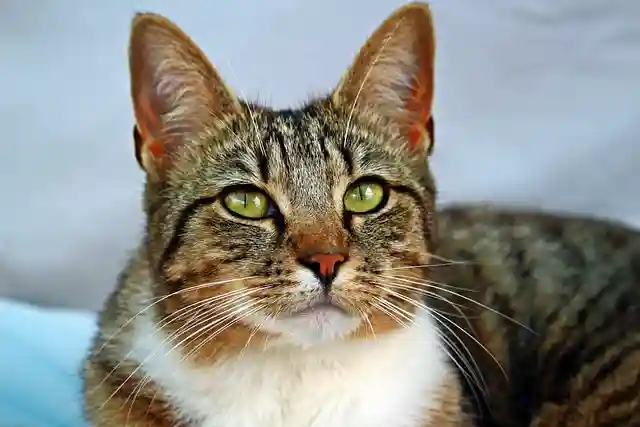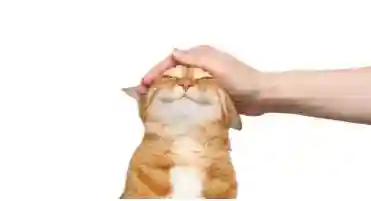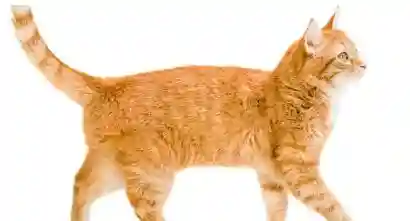At PetsCareWorld, we’re committed to providing you with the most informative and engaging content on the web. In this article, we delve into the captivating world of Orange Tabby Cat. Those adorable feline companions have captured the hearts of cat enthusiasts worldwide. Our goal is to not only share insights about these charming cats but also to provide you with a comprehensive resource on this beloved feline breed.
The Orange Tabby Cat Phenomenon
Unveiling the Beauty of Their Coat
Orange tabby cats, often referred to as ginger cats, are renowned for their striking coat patterns. The beautiful blend of orange, red, and white hues in their fur creates a unique and mesmerizing appearance. This distinctive coat is the result of a genetic variation known as the tabby pattern.
- Striking Coloration: Orange tabby cats exhibit a captivating blend of orange, red, and white hues in their fur.
- Genetic Elegance: Their distinctive coat is a result of the MC1R gene, responsible for producing the red and orange colors in their fur.
- Tabby Patterns: Tabby cats boast various patterns, including classic swirls, mackerel stripes, spotted spots, and ticked speckles, which add to their charm.
A Glimpse into Their Genetics
Tabby cats inherit their distinctive coat from a specific gene called MC1R. This gene determines the production of a pigment called pheomelanin, which is responsible for the red and orange colors in their fur. Understanding the genetic basis of their coloration adds an intriguing layer to our appreciation of these feline companions.
The Different Varieties of Orange Tabby Cats
Classic Tabby Cats
The classic tabby pattern is the most common among orange tabby cats. It features bold, swirling patterns on their fur, often resembling a bullseye on their sides. This classic look is a favorite among cat lovers for its timeless charm.
- Timeless Swirls: The classic tabby pattern, often called the “marbled” or “swirled” pattern, is the most prevalent among orange tabby cats.
- Bullseye Markings: This pattern features bold, swirling, and circular markings on the cat’s sides, resembling a target or bullseye, which gives them a distinctive and elegant appearance.
- Rich Color Contrast: The interplay of vibrant orange, deep red, and crisp white within these swirls creates a visually stunning and eye-catching contrast in their fur.
- Heritage and Tradition: Classic tabby patterns are reminiscent of the ancestral tabby cats, reflecting a timeless and enduring elegance that appeals to many cat enthusiasts.
Classic tabby-patterned orange tabby cats are celebrated for their traditional and captivating appearance, making them a beloved choice for those who appreciate the grace and beauty of feline companions.
Mackerel Tabby Cats

Mackerel tabby cats sport narrow, vertical stripes along their body. These stripes create a unique and eye-catching appearance that sets them apart from other tabby patterns. It’s like having a mini tiger as your pet!
- Stripes of Elegance: Mackerel tabby cats are characterized by narrow, vertical stripes that run along their body. These stripes closely resemble the patterns you might find on a fishbone, which is how they got their name, “mackerel.”
- Sleek and Athletic: The sleekness of their appearance, accentuated by these graceful stripes, adds an athletic and agile quality to their look. It’s as if they’re perpetually ready to pounce and play.
- A Tiger in Miniature: The mackerel tabby’s striking stripes give them an appearance reminiscent of their larger wildcat relatives, like tigers. This mini-tiger resemblance can be incredibly captivating.
- Individual Variation: While mackerel tabbies share the characteristic stripes, each cat’s pattern is unique, with variations in stripe thickness and spacing. This individuality makes them even more fascinating to observe.
Mackerel tabby cats bring a touch of the wild to your home with their distinctive and eye-catching appearance, making them a favorite among cat lovers who appreciate their exotic charm.
Spotted Tabby Cats
For those who appreciate a more contemporary twist, the spotted tabby is a delightful choice. Their coats are adorned with spots rather than stripes or swirls, giving them an almost leopard-like appearance. These cats exude a sense of wild elegance.
- Leopard-Like Elegance: Spotted tabby cats are known for their coat adorned with distinctive spots, akin to the markings of a leopard or cheetah. This unique pattern sets them apart from other tabby variations.
- A Touch of the Wild: The spots on their fur give them an air of wild elegance, reminiscent of their larger, wildcat relatives. It’s like having a piece of the wild right in your home.
- Varied Spot Sizes: The size and arrangement of spots can vary from cat to cat. Some may have smaller, closely spaced spots, while others may exhibit larger, more spaced-out spots. This individuality adds to their charm.
- Understated Sophistication: The spotted tabby pattern exudes a sense of understated sophistication, making them a popular choice for those who want a cat that combines the wild with a refined appearance.
Spotted tabby cats bring a touch of the exotic to your household, captivating all who encounter their unique and striking coat pattern.
Ticked Tabby Cats
Ticked tabby cats have a subtly intricate pattern, with each hair having multiple bands of color. This gives their fur a speckled or salt-and-pepper appearance. It’s a refined and understated beauty that appeals to many cat enthusiasts.
- Subtle and Speckled: Ticked tabby cats have a subtly intricate coat pattern. Instead of distinct stripes or spots, each individual hair on their fur features multiple bands of color, giving their coat a delicate speckled or salt-and-pepper appearance.
- Uniform Complexity: What’s fascinating about the ticked tabby pattern is its uniform complexity. The speckling effect is spread evenly across their entire body, creating a harmonious and visually pleasing look.
- Understated Beauty: Ticked tabbies exude an understated yet refined beauty. Their coat appears almost solid from a distance, but upon closer inspection, the intricate pattern of multiple color bands becomes apparent.
- Unique Aesthetic: This unique pattern appeals to those who appreciate a more subtle and sophisticated aesthetic in their feline companions. Ticked tabby cats offer a distinctive and elegant presence in any home.
Ticked tabby cats are a testament to the subtle complexities of nature’s artistry. Their delicate speckled pattern adds a touch of sophistication to their appearance, making them a charming choice for cat enthusiasts seeking a more refined aesthetic in their furry friends.
Orange Tabby Cat Personalities
The Social Butterfly
One of the most endearing traits of orange tabby cats is their sociable nature. They are known for being outgoing, friendly, and affectionate. These cats thrive on human companionship and are often seen as the life of the party in any household.
Playful and Energetic
Orange tabby cats have an innate sense of curiosity and playfulness. They are boundlessly energetic and can turn even the most mundane household items into toys. This playful disposition makes them wonderful companions for families and individuals alike.
Intelligent and Trainable
Their intelligence sets them apart in the feline world. Orange tabby cats are highly trainable and can learn tricks and commands quickly. This makes them a joy to have around as they can be taught to do all sorts of fun and useful tricks.
Caring for Your Orange Tabby Cat

Diet and Nutrition for your Orange Tabby Cat
Maintaining a healthy diet is essential for the well-being of your orange tabby cat. Ensure they receive a balanced diet rich in protein and essential nutrients. Consult with your veterinarian to determine the best dietary plan for your furry friend.
- Balanced Diet: Orange tabby cats, like all cats, require a balanced diet that includes protein, carbohydrates, fats, vitamins, and minerals to thrive.
- High-Quality Protein: Ensure their diet is rich in high-quality protein, which is essential for muscle development and overall health. Look for cat food with meat as the primary ingredient.
- Portion Control: Be mindful of portion sizes to prevent overeating and obesity, which can be a concern in some cats. Follow feeding guidelines provided on cat food labels.
- Fresh Water: Always provide access to fresh, clean water. Hydration is vital for their health and well-being.
- Avoid Human Food: Avoid feeding them human food, especially toxic substances like chocolate, onions, and garlic.
- Special Dietary Needs: Some orange tabbies may have specific dietary needs due to allergies, sensitivities, or medical conditions. Consult with a veterinarian for tailored dietary recommendations if necessary.
- Life Stage Matters: Consider their age and life stage. Kittens, adults, and senior cats have varying nutritional requirements.
- Wet vs. Dry Food: Both wet and dry cat food have their advantages. Wet food can help with hydration, while dry food can aid in dental health. Some cat owners opt for a combination of both.
- Regular Feeding Schedule: Establish a consistent feeding schedule. Cats often prefer routine, and regular meals can help prevent overeating.
- Monitor Weight: Keep an eye on their weight and body condition. Adjust their diet as needed to maintain a healthy weight.
- Consult a Veterinarian: If you have any concerns about your orange tabby’s diet or nutrition, consult with a veterinarian. They can provide expert guidance based on your cat’s specific needs.
Proper diet and nutrition are fundamental to the health and well-being of your orange tabby cat. By following these guidelines and consulting with a veterinarian when needed, you can ensure that your furry friend receives the best possible care.
Exercise and Play
As mentioned earlier, these cats are bursting with energy. Providing them with regular playtime and interactive toys is crucial for their physical and mental health. Engaging in play also strengthens the bond between you and your feline companion.
Regular Veterinary Care
Routine check-ups with your veterinarian are essential to monitor your cat’s health. Vaccinations, dental care, and preventive measures against common feline illnesses are all part of responsible pet ownership.

10 Lesser-Known Facts about Orange Tabby Cats
- Orange tabby cats are not a specific breed, but rather a color pattern that can be found in a variety of cat breeds, including Maine Coons, American Shorthairs, and Persians. The orange color can range from pale yellow to deep red.
- They are often male: Around 80% of orange tabby cats are male due to the genetics behind their fur color. Female orange tabbies are relatively rare.
- Orange tabby cats are popularly known as “marmalade cats,” owing to their resemblance to the vibrant orange color of marmalade.
- Some believe that the orange coloration in tabby cats is associated with a more friendly and sociable temperament. While this isn’t proven, many orange tabbies are indeed known for being affectionate and outgoing.
- They tend to have a distinctive “M” shape on their foreheads. This marking, known as the “Mackerel Tabby” pattern, is a common characteristic among many tabby cats.
- The orange tabby pattern is more prevalent in certain regions, such as the United States and the United Kingdom. This could be due to the popularity of certain breeds that commonly have this coloring.
- In ancient folklore, orange tabby cats were often believed to bring good luck and fortune to their owners. They were even used as lucky charms on long voyages by sailors.
- Some famous fictional cats have been depicted as orange tabbies, such as Garfield, Hobbes from Calvin and Hobbes, and Puss in Boots from Shrek.
- The orange tabby gene is sometimes associated with certain health issues, including a higher risk of developing skin cancer due to their lighter fur pigmentation.
- Orange tabbies can have different eye colors, ranging from green and gold to amber and even blue. The eye color is not determined by their fur color, but instead, by their breed and genetics.
Are orange tabbies the friendliest cats?
Orange tabby cats are often regarded as some of the friendliest and most sociable cats in the feline world. However, it’s important to note that a cat’s temperament can vary widely based on factors such as genetics, upbringing, and individual personality. Here’s why orange tabbies often earn their reputation as friendly companions:
- Sociable Nature: Many orange tabby cats have a naturally sociable disposition. They tend to be outgoing and enjoy interacting with their human family members. This social nature can lead to a strong bond between the cat and its owners.
- Affectionate Behavior: Orange tabbies are known for their affectionate behavior. They often seek out cuddles, head rubs, and lap time. Their desire for physical affection makes them wonderful companions for people who enjoy close interaction with their pets.
- Playfulness: These cats are typically quite playful and energetic. They enjoy interactive play sessions, which can be a great way to bond with them. Their playful nature adds a lively and entertaining element to the household.
- Adaptability: Orange tabby cats are known for their adaptability and resilience. They tend to adjust well to various living situations and can be more accepting of changes compared to some other cat breeds.
- Intelligence: Many orange tabbies are intelligent and can learn tricks and commands relatively easily. This intelligence makes them trainable and can lead to a more harmonious relationship with their owners.
While these traits are common among orange tabbies, it’s important to remember that individual personality can vary. Factors like early socialization, the cat’s unique experiences, and its upbringing can all influence its temperament. If you’re considering adopting an orange tabby or any cat, spending time with the cat before bringing it into your home is an excellent way to gauge its friendliness and compatibility with your lifestyle.
Why are orange cats more friendly than other cats?
The perception that orange cats are more friendly than other cats is a common stereotype, but it’s important to note that a cat’s friendliness is not determined by its coat color. The idea that orange cats are friendlier may arise from anecdotal experiences or cultural beliefs, but it lacks a scientific basis.
A cat’s temperament and behavior are influenced by a combination of factors, including genetics, early socialization, upbringing, and individual personality. Here are a few reasons why some orange cats might be perceived as friendly:
- Socialization: Cats that have positive early socialization experiences with humans and other animals are more likely to be friendly and sociable. This can apply to cats of any coat color.
- Individual Personality: Each cat has a unique personality. Some cats, regardless of their coat color, are naturally more outgoing and affectionate, while others may be more reserved.
- Owner Interaction: The way a cat is treated and interacted with by its owners can significantly influence its behavior. Cats that receive love, attention, and positive reinforcement from their owners are more likely to be affectionate and friendly.
- Confirmation Bias: If someone believes that orange cats are friendlier, they may pay more attention to the friendly behaviors of orange cats and overlook similar behaviors in cats of different colors.
- Selective Breeding: Some breeds, including certain orange tabby cats, have been selectively bred for sociable and friendly traits. However, this does not apply to all orange cats.
It’s essential to recognize that the color of a cat’s coat is not a reliable indicator of its temperament. Cat personalities vary widely, and there are friendly and affectionate cats of all coat colors. When adopting a cat, it’s advisable to spend time with the cat to assess its temperament and compatibility with your lifestyle, rather than making assumptions based on coat color.
Conclusion
Orange tabby cats are not just pets; they are cherished members of our families. Their unique beauty, friendly personalities, and intelligence make them truly remarkable companions. By understanding the genetics behind their coat patterns and their distinct personalities, we can provide them with the care and love they deserve.
In this article, we’ve explored the world of orange tabby cats, from their coat patterns to their playful nature and the importance of proper care. We hope this comprehensive guide has been informative and enjoyable for you.
Frequently Asked Questions (FAQs)
Are all orange tabby cats male?
No, although orange tabby cats are more commonly male due to the genetics of their coat color, females can also be orange tabbies. However, the occurrence of female orange tabby cats is less common.
Are orange tabby cats a specific breed?
No, orange tabby is not a specific breed but a coat color pattern found in various breeds. You can find orange tabbies among domestic shorthairs, Maine Coons, American Shorthairs, and more.
Do orange tabby cats have distinct personalities?
While coat color doesn’t determine personality, many orange tabby cats are known for their friendly and sociable nature. However, individual personalities can vary widely.
Do orange tabby cats shed a lot?
Shedding varies from cat to cat, but like most cats, orange tabbies can shed. Regular grooming and brushing can help reduce shedding and keep their coat in good condition.
Are there health concerns specific to orange tabby cats?
There are no specific health concerns related to coat color. However, orange tabby cats, like all cats, should receive routine veterinary care to monitor their overall health and well-being.







Leave a Comment
You must be logged in to post a comment.